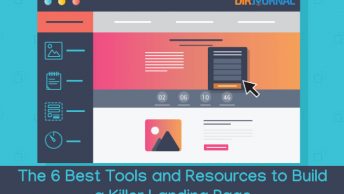Just look around you if you need any confirmation that the use of mobile devices is growing rapidly. In addition to cell phones getting smarter all the time, the big news is that tablets are the device that is showing the most explosive growth. This cataclysmic shift from desktop PCs and labtops to smart mobile devices is something that any competent CEO should factor in to their business strategy.
All online web properties must take into account that an increasing proportion of visitors will be viewing them on mobile devices. For some that means a smartphone and for some that means a tablet. In other words there could be a whole variety of screen sizes and a variety of web browsers that are being used. How can you make sure that all of them will have a good user experience and will find it easy to take whatever actions they might wish to take, whether that is making an immediate purchase or getting more information.
What About Responsive Design For Websites
Google will be significantly affected by what business owners choose to use as their preferred approach in making all these online property visitors. Not surprisingly Google has set out its recommendations for building smartphone-optimized websites. They suggest that when building a website that targets smartphones, any of three different configurations are suitable:
- Sites that use responsive web design (using just CSS – cascading style sheets – to change how the page is rendered for different devices: this is Google’s recommended configuration).
- Sites that dynamically serve different HTML code (and CSS) depending on whether the user is using a desktop or a mobile device.
- Sites that have separate mobile and desktop websites.
In summary in all cases they suggest HTML code based websites, which their spiders or robots can crawl. By this means, they can index all this content as they attempt to fulfill their mission to organize the world’s information and make it universally accessible and useful. That’s all very laudable but sometimes it’s difficult with comparable content to accommodate those very different screen areas, those different browsers and those different input devices, namely touch screens, mice and keyboards.
A somewhat similar dilemma from Microsoft is an indicator of the challenges involved. The Windows 8 operating system was designed with touch screens in mind. As a result, its usability for those who prefer to work with mouse and keyboard is a little painful. I can personally testify to that since I am sticking with Windows 8 only because Windows 8.1 is promised in mid-October and supposedly will address these concerns.
Apps for Calls to Action
As opposed to downloading everything from a website (HTML code, images and CSS style sheets) each time you visit, another way is to download an app from that same Internet location and hold that in the mobile device’s memory. This app can be designed to give the minimal information and action opportunities that a mobile device user might need. It also can ensure the best possible usability given the capabilities of that mobile device including its screen size. Only minimal current data needs to be downloaded from the Internet location so processing speed is very fast and there is minimal battery usage involved. Provided the user has the motivation to download the app, this is the very best solution.
That is to say for all but Google. Although the NSA may be able to detect what is happening on the mobile device, Google is shut out. The user is now working on what has been called the App Internet and it’s all a mystery to Google.
The user’s ability to take actions they desire on their device can be optimized. In addition if the aim is to sell something to that user, the Call to Action button can be made to be very easy to use thus maximising the chance of a sale. For these reasons, high traffic websites are optimising their visitors’ experience by offering appropriate apps.
BYOD (Bring Your Own Device) Brings Apps to Business
Another powerful influence on the availability of apps is the BYOD (Bring Your Own Device) phenomenon. Many smartphones and tablets have great speed and memory size and can easily handle the computing requirements of both their personal information and whatever enterprise systems may be required. Again the efficiency with which staff can work is much enhanced if they have apps installed on their devices.
It is therefore not surprising to see that Computerworld is shortly holding The Power of Mobile Apps Symposium. This will discuss the challenges in handling the enterprise mobility movement while safeguarding the enterprise’s greatest assets – its applications and data. This does raise serious security concerns if staff have valuable corporate data on their mobile devices that they take home and carry on their person. To counter this, LG Gate tech separates work and play on BYOD smartphones. That’s one approach but others will need to hammer out reasonable policies that their staff accept.
Customers Buying With Their Phones Works Better With Apps
It is quite clear that the growing reliance on smart devices is influencing consumer behavior.
The trend towards a home-centred lifestyle has given way to a movement towards mobile or individual “cocooning”, whereby consumers are immersed in their own digital worlds anywhere at any time.
Consumers are increasingly using their mobile apps to help them find suppliers and make purchases, particularly from local suppliers. All businesses are well advised to consider how this impinges on their marketing strategy.
Bottom Line – Go App but Tell the World Wide Web
By now you will see that the title of this article raised a false dichotomy. Apps will be increasingly around in a mobile world and they cannot be avoided. Here are some of the reasons:
- Apps provide better user experiences than the equivalent Web based process.
- Mobile devices have the memory and computing ability to easily handle them
- Apps will involve less battery utilisation than the equivalent process done via the Internet
Given this, once your customer or prospect has downloaded your app, then you have a privileged way of working with that individual. The key problem is how would the prospect ever find the app. Remember that Google has no knowledge of what is happening in the App Internet.
Clearly apps alone are not enough. You still need a website that is adequately visible in Google Search and has good usability and information content. In other words, the need for a good website is still there unchanged. It should be so well designed that the visitor is persuaded to click the button and download the app. With that degree of commitment, if your products and services represent good value, then the sale will not be long in coming.






